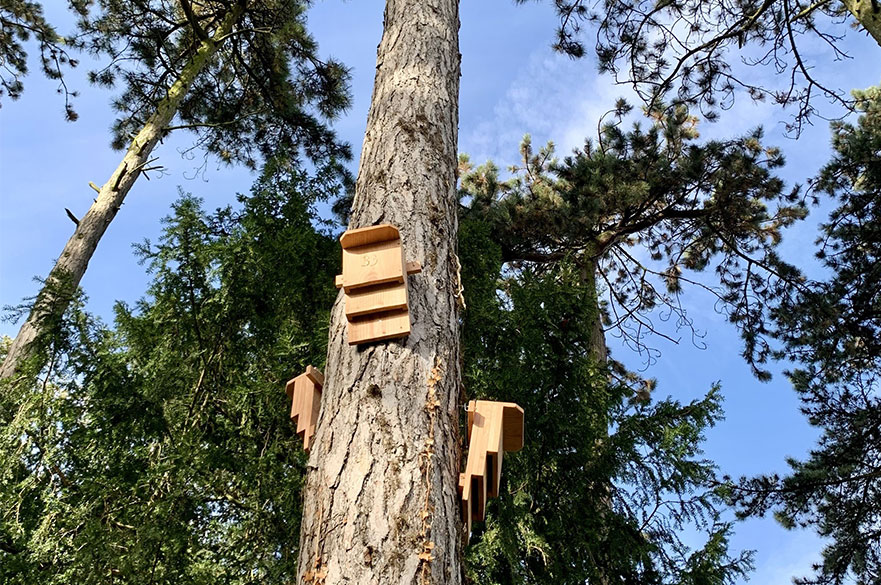Protecting our fangtastic wildlife this Halloween and Autumn
Published: 01/11/2023
Bats have long been associated with Halloween, but they are also a vital part of our native wildlife.
There are 18 species of bat found in the UK, accounting for almost a third of all mammal species in the UK.
Barbastelle bats (Barbastella barbastellus), one of the rarest species of mammal in the UK, were recorded at Brackenhurst Campus for the first time earlier this year by the Conservation Society and Nottinghamshire Bat Group.
Firstly, let's clear the air about bats. We don’t have vampire bats in the UK and even if we did, they very rarely bite humans. Instead our UK bats act like the ultimate mosquito hitmen. Since all bats in the UK are insectivores, they are essential to maintaining insect populations - one tiny pipistrelle can consume over 3,000 little insects in a single night.
Did you know that bats are also pollinators? They are essential to the pollination of about 500 plant species worldwide, including agave, banana, durian, guava and mango.

Monitoring bat species provides valuable insight into the wider health of an ecosystem, as they are top predators of common nocturnal insects and are sensitive to changes in land use practices. The challenges bats face, like changes in landscapes, agricultural intensification, developments and habitat fragmentation, also affect other species.
The Sustainability team and the FE Wildlife Conservation students at Brackenhurst, started a 'Bat Box Monitoring Project' earlier this September. A total of 30 new bat boxes are being installed throughout the campus. These will be monitored annually under licence and will aid in the local records of the distribution of bats in Nottinghamshire.
The Hedgehog Friendly Campus #CheckYourBonfires campaign
Hedgehogs are frequent garden visitors in the UK. During this time of year, they’ll be on the hunt for somewhere to hibernate and a large pile of wood is the perfect nesting spot as it provides protection and warmth.
The UK hedgehog population is already in serious decline and mortality from bonfires places preventable pressure on dwindling populations.
The Sustainability team is asking everyone to always check their bonfires for hibernating hedgehogs before lighting. The following steps can be taken to ensure that your bonfire is wildlife-friendly:
- Build your bonfire only hours before it is due to be lit.
- If you have built your bonfire in advance, the best practice would be to dismantle the bonfire and move it to a different spot before lighting it.
- Check your bonfire for wildlife with a broomstick, by using the pole to lift the edges of the bonfire. Make sure to check the centre of the pile and listen out for any movement or noise.
- Lighting your bonfire from one side only will provide an escape route if any wildlife has been missed.
Checked a bonfire? Let the Sustainability team know
Email the Sustainability team with the details and support NTU in achieving the Hedgehog Friendly Campus Platinum Award for 2023/24.
Virtual firework show
Monday 6 – Friday 17 November
This year, NTU is going one step further and demonstrating what a wildlife-friendly bonfire night celebration looks like with a two-week interactive projected firework show in Benefactors Court, City Campus.
The display creates a celebration of colour and light, without the associated ecological impacts fireworks can have on hedgehogs and other species. Make sure you check it out!